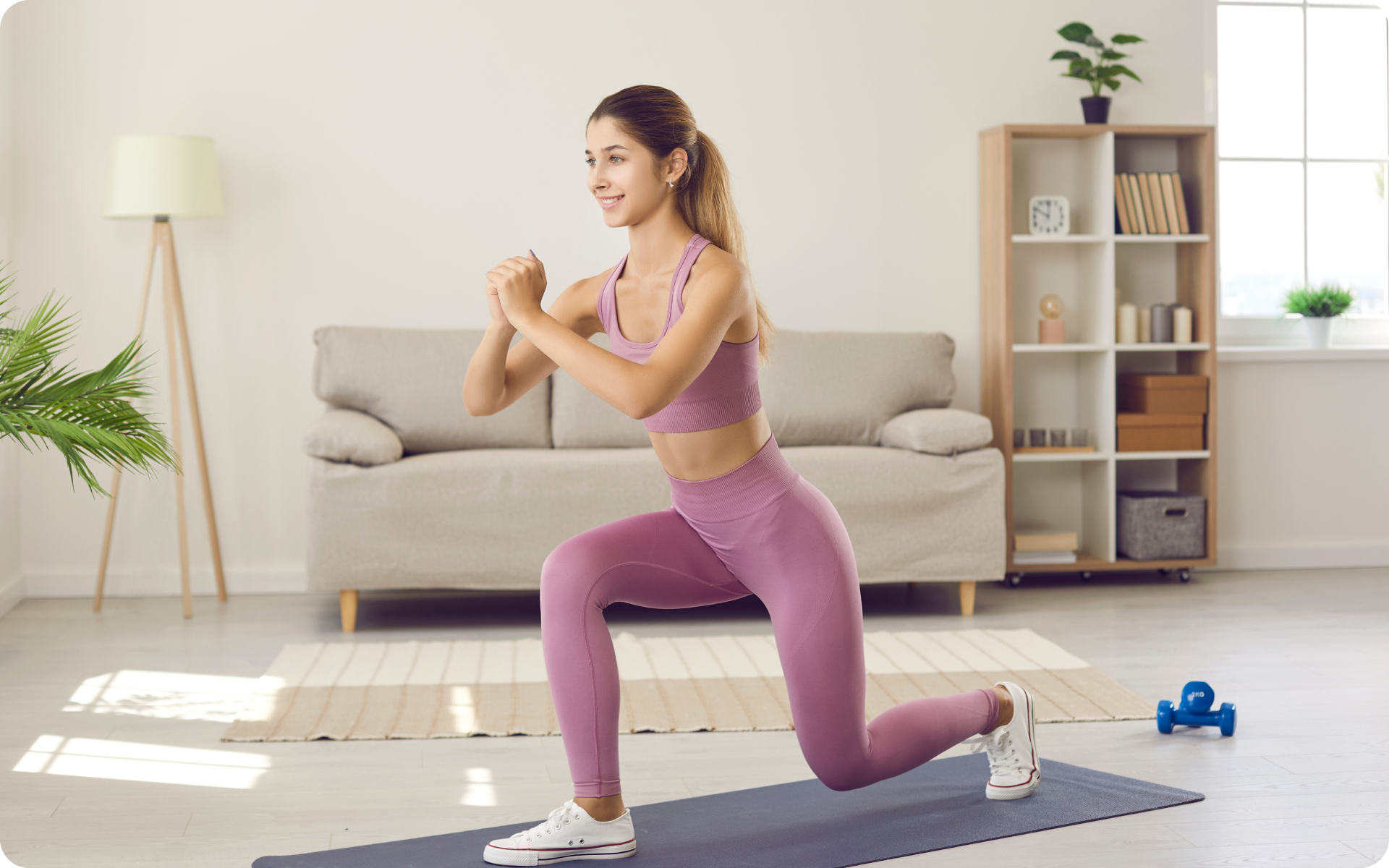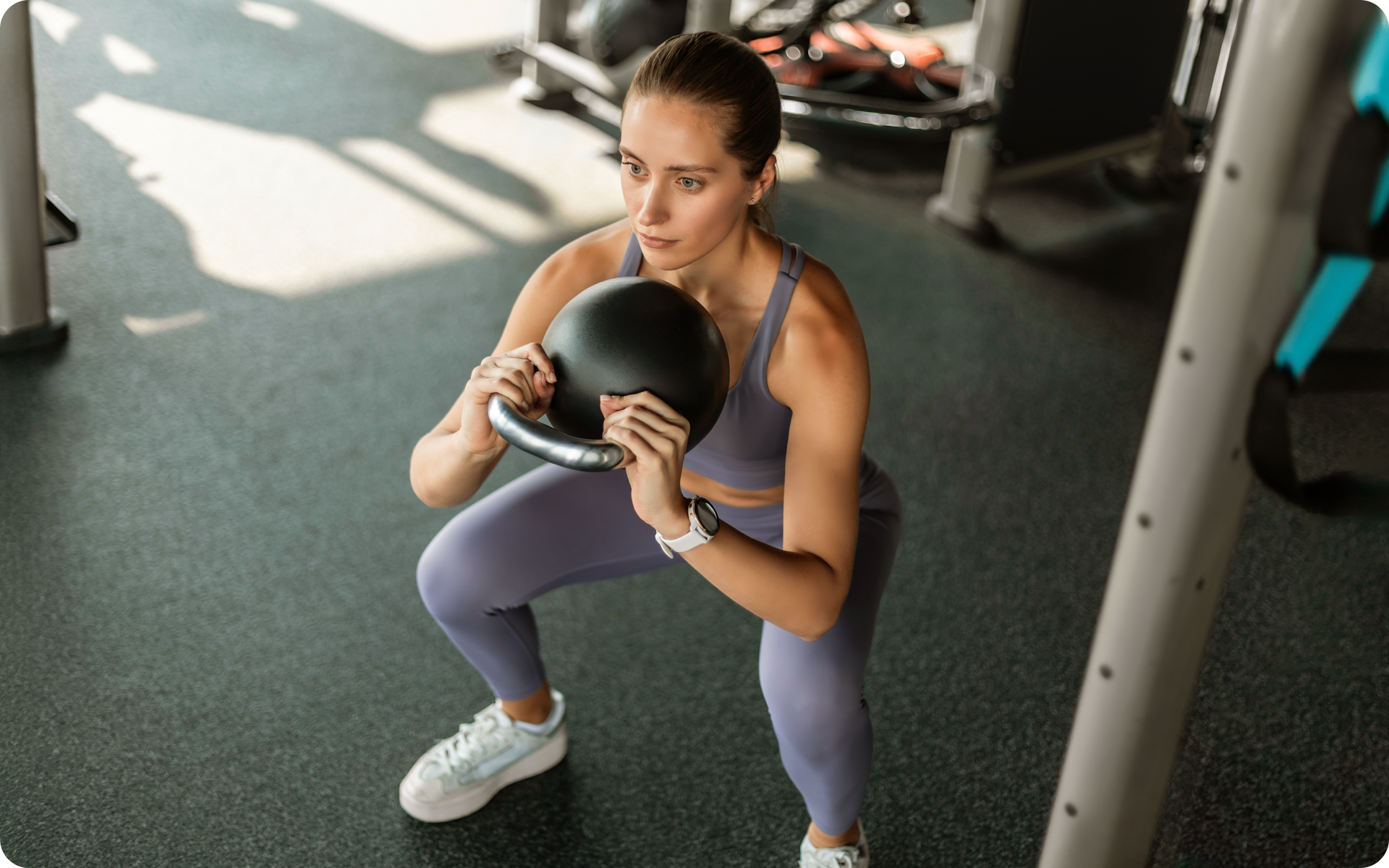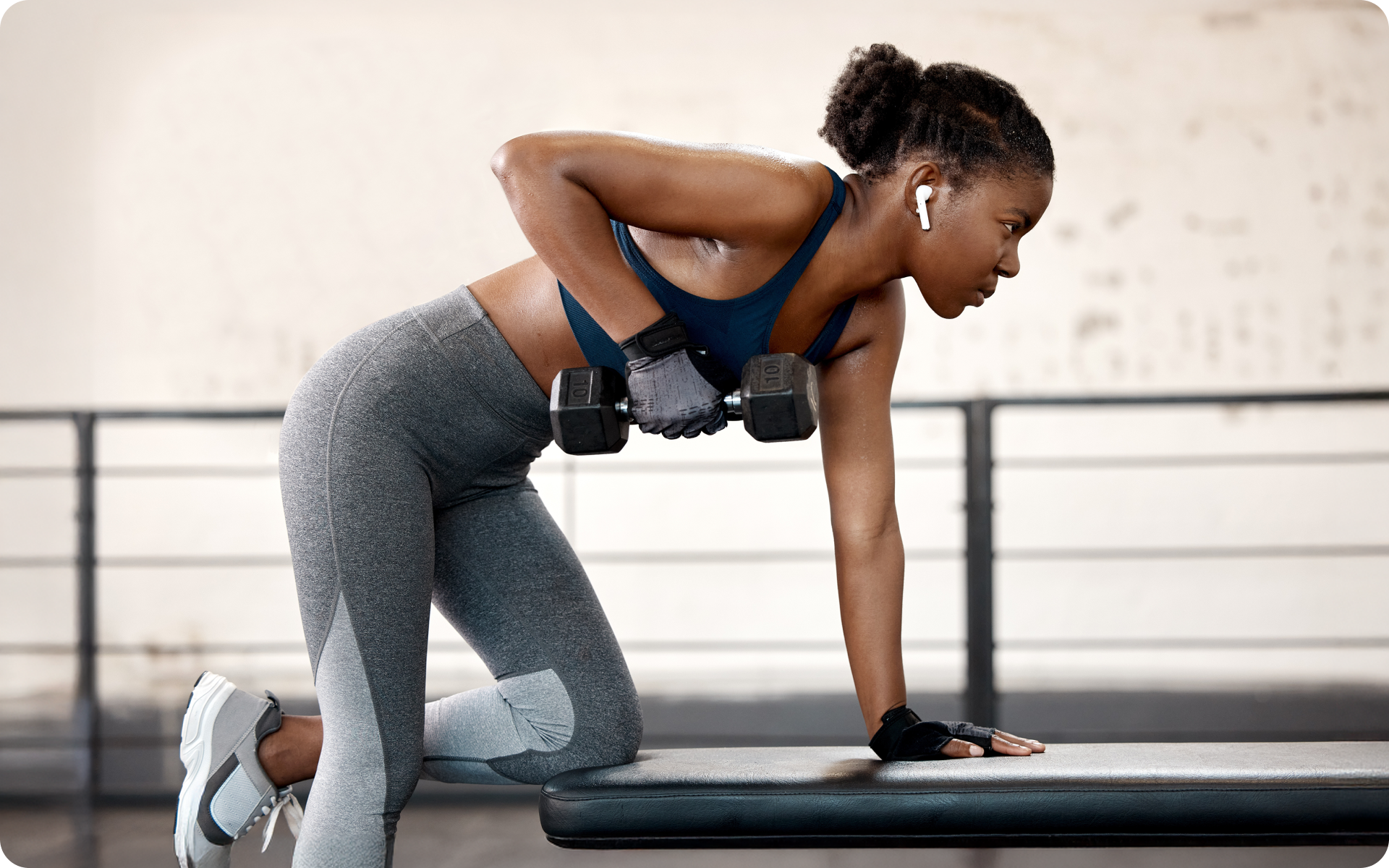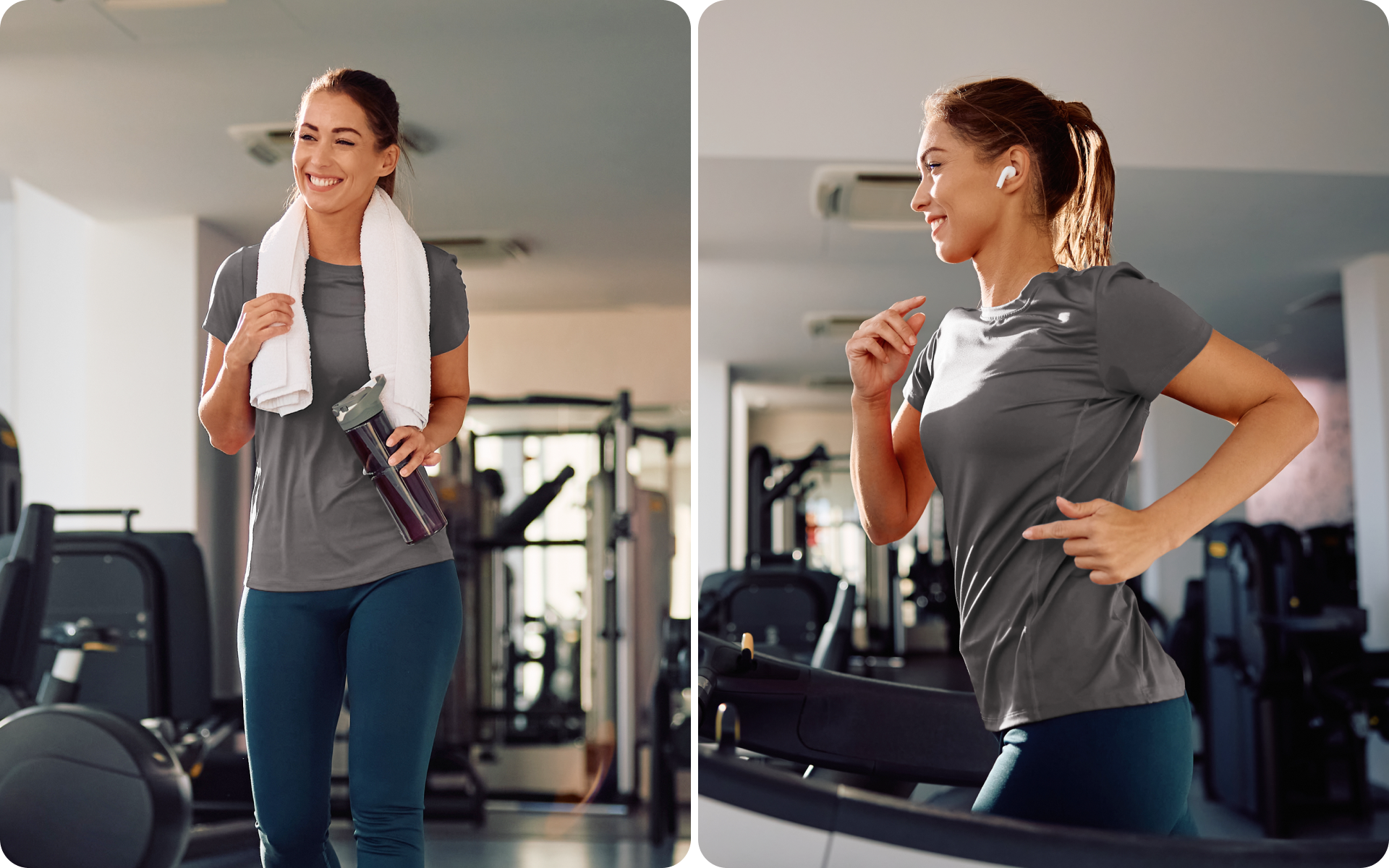Weight loss is a goal for many people. Losing weight can be difficult and time-consuming, but with a 10-day plan, it can feel more manageable. In this article, we’ll teach you how.
We’ll start by going over the basics of what’s needed to lose weight, then go on to describe some specific workouts that are good for 10-day plans, in addition to the benefits of these exercises. We’ll also talk about what you need to do before starting your program so that it will work best for you.
If you’re ready to get started losing some pounds, read on!
Can You Get in Shape in 10 Days?
Getting in shape in just 10 days is likely not a realistic goal, but you can certainly make some noticeable improvements in your fitness and well-being in that time span. 10 days can offer you a start to a long-term relationship with healthy exercise and eating habits. 10 days won’t be enough to dramatically change your body, but arguably the hardest part about change is getting started on it.
Here’s what you can and can’t achieve in 10 days:
Potential Goals in 10 Days
These goals will all likely take longer than 10 days, but remember that this is the starting point of long-term success.
- Improved Energy Levels: By incorporating regular physical activity and a balanced diet, you may notice an increase in your energy levels (1). Exercise boosts endorphins, which can enhance your mood and overall sense of vitality (2).
- Slight Muscle Toning: Engaging in consistent strength training exercises such as squats, lunges, or push-ups can lead to slight improvements in muscle tone (3). While you won’t see drastic changes, you may notice that your muscles feel firmer.
- Better Hydration: Focusing on drinking enough water each day can lead to improved hydration, which can positively affect your skin, digestion, and overall health (4). Make it a goal to drink at least 8-10 glasses of water daily.
- Enhanced Mental Clarity: Physical activity can also benefit your mental health, potentially leading to better focus and mental clarity. The endorphin release from exercise can help reduce stress and anxiety (2).
- Healthier Eating Habits: Use these 10 days to start building healthier eating habits such as consuming more fruits, vegetables, and lean proteins while reducing processed foods and sugars.
Limitations in 10 Days
- Significant Weight Loss: While you might see a small reduction in weight, largely due to water loss and reduced bloating, significant fat loss takes more time and a sustained calorie deficit.
- Major Muscle Gain: Building substantial muscle mass requires time, consistent strength training, and nutritional support (5) (6). For 10 days, you should focus on establishing a routine rather than expecting major gains.
- Long-lasting Habit Formation: While you can start forming good habits in 10 days, it takes longer to solidify these habits into your lifestyle. Use this period as a stepping stone to continue beyond the initial challenge.
- Complete Fitness Transformation: A complete body transformation isn’t feasible in such a short timeframe. However, you can lay a solid foundation for continued progress.
Long-term Commitment
While a 10-day challenge is a great way to jumpstart your journey, remember that fitness and health are long-term commitments. Maintaining a healthy lifestyle involves setting realistic goals and making sustainable changes you can continue indefinitely.
Use these 10 days as an opportunity to build momentum, and carry forward the positive changes to achieve your long-term fitness goals.
BetterMe: Health Coaching app is a foolproof way to go from zero to a weight loss hero in a safe and sustainable way! What are you waiting for? Start transforming your body now!
How Much Weight Can You Lose in 10 Days?
The answer to this question is different for everyone. Your weight can fluctuate based on your workouts, how much you eat, and what time of the month it is. There are a few things that affect your weight loss, including (7):
- Your goal weight
- Health condition
- Metabolism rate
- Activity level
- Age
- Height/weight ratio = BMI (body mass index)
- Sex-related factors such as pregnancy or menopause.
You should evaluate your weight loss goals with how much you weigh, what your goal weight is, and how long it will take to get there. For some people, losing 5-10 pounds would be a great goal, while for others, 14-21 pounds would be more suitable.
Losing anywhere between 1/2 and 2 lbs per week would be considered healthy weight loss depending on the individual’s specific circumstances outlined above (8).
Cardio Exercises in the 10-Day Challenge Workout Plan
Exercising on a regular basis is one of the best things you can do for your body. In addition to weight loss, cardio workouts offer many other benefits including (9):
- Reduced stress levels
- Lower blood pressure and cholesterol levels, which reduces the risk of heart disease
- Improved bone density and posture
- Increased energy levels
- Mental focus
Cardio exercise increases your metabolic rate, which means that calories will continue being burned throughout the day after you finish your workout. When you’re looking for a workout program to lose weight, consider incorporating some running into your plan. Keep it short – 30 minutes of running twice a week could be enough to see results.
Read more: Gym Workout Plan for Female Beginners
Some ideal cardio exercises to have in your workout plan are:
- Treadmill workouts
- Mountain climbers
- Jumping jacks
- Burpees
- Shadow boxing
Start your cardio workout with 10 minutes of warm-up exercises. This will elevate your heart rate, help prepare your body for the workout ahead, and even burn some extra calories to maximize your progress during the next 30 minutes. Finish with another 10 minutes of cooldown exercises to lower your heart rate gradually, then stretch.
Strength Training Exercises in the 10-Day Challenge Workout Planning
Strength workouts are ideal for losing weight as they build lean muscle mass, which increases your body’s metabolic rate so that more calories can be burned despite being sedentary throughout the day (10).
Moderate strength training has also been shown to create an improved sense of well-being by releasing endorphins throughout your body (11). This is helpful if you need an extra push to get started losing weight.
Strength training is also beneficial as it builds muscle strength that can help prevent injuries by strengthening your muscles and bones.
Arguably the best way to design a beginner strength training routine is to focus on the basics: squats, deadlifts, rows, presses, and pull-ups/chin-ups. These movements are functional and tend to be a great base for building up to more challenging lifts.
These exercises have been proven over decades of research in different settings with people from beginners to athletes, men, and women alike that they are effective for building muscle mass while preventing injury when done with proper form (12).
For this program, we recommend aiming for 3 sets of 8 reps with a 60-second rest between sets so your weights stay manageable while allowing you enough time to build up your endurance for each exercise.
Some of the best strength training exercises are (12):
Lunges
These exercises can be done at home or in the gym.
You can also do lunges with dumbbells without even stepping outside your house. Simply hold weights in each hand and step out into a lunge position before coming back up to a standing position.
Squats
Simple squats done alone will help tone muscles throughout your body as you’re using all of your lower body muscles to stabilize yourself as you lower yourself in an upright position. If you want more, try adding weight by holding dumbbells or wearing a weighted backpack to make this exercise more challenging.
Deadlifts
By lifting heavy objects, deadlifts work many different muscle groups, including the glutes, legs, arms, core, and back muscles. This is commonly done with a barbell, but can also be completed with dumbbells or kettlebells.
BetterMe will shake off your mental funk, rid you of your energy-zapping habits, and help you sculpt the body of your dreams. Intrigued? Hurry up and change your life for the better!
Row
Rows are ideally done with dumbbells to achieve the best results, but you can also use resistance bands or kettlebells if they’re available to you. This exercise works your upper back and upper body. It can target your rhomboids, lats, biceps, and forearms. You can either do it seated or standing, depending on which variation you’re trying to achieve.
Press
This exercise includes pushing a weight away from yourself. It’s considered a press because you’re pressing the weight away from you. This can be done seated or while standing. There are many variations of pressing movements.
Presses work many different muscles in your body, depending on which exercise you’re looking to complete. For that reason, they’re essential for any strength-building program. Building strength and muscle is important because more lean muscle means a higher metabolic rate (13). It also means that gaining more strength and coordination can even help prevent injuries when you exercise regularly.
Pull-ups/ Chin-ups
These exercises work the back muscles including your lats, traps, and rhomboids. You can do pull-ups or chin-ups with a straight bar. To make it even more challenging, you can use a weighted backpack to add more weight to the entire movement. This will make it so that you’re pulling your body weight and additional weight on top of it.
Another factor to consider is that due to the position of your hands for these exercises, the chin-up will work your biceps more than a pull-up. Both exercises are great options for improving strength in your upper body.
Back Extensions
Target your core and lower back with this exercise by lifting your legs, chest, and upper body off the ground. This is an advanced exercise, so make sure to use caution when you perform this movement. Don’t add weight to this movement unless you have perfected the form.
Progressive Load – Which Weights Are Best for You?
When you’re figuring out how much weight to lift for your exercise of choice, start with mastering the form of the exercise without weight. From there, look to add weight slowly without compromising your form. A great goal to have is to increase the weight slightly each week, but remember to progress at your own pace. Proper form is more important than the amount of weight you’re using.
If you need help determining how much you should be lifting, look for certified trainers in your area who specialize in strength training. If you’re trying out a new lift and need some extra support, see if there’s a trusted friend or family member who can spot you while you work out. If you’re exercising at a gym, some employees may be able to offer you a spot when you’re lifting. Feel free to ask them for support and if they’re able to help you out.
The 10-Day Workout Challenge Planning
For 10 days, you should aim to do the following:
2-3 Cardio Workouts
When you’re trying to lose weight, one beneficial way to do it is to keep your cardio workouts short and intense. This will reduce the amount of time it takes to complete, which can help with motivation.
Another route to take is to aim for a total of 30 minutes of running. If you’re not a runner, then pick any other form of cardiovascular exercise that’s challenging but manageable for you. Cycling is great as it doesn’t put pressure on the joints like running does.
Strength Workouts – 3×8 Reps with 60s Rest Between Sets
As mentioned above, these exercises should be the foundation of a beginner workout plan if your goal is muscle building.
You can also incorporate HIIT (high-intensity interval training) into your strength training routine, which has been shown to increase metabolic rate and burn fat post-workout (14). HIIT is perfect for those who are crunched for time.
Sample 10-Day Challenge Workout Plan
Here’s a sample workout plan you can use for 10 days:
- Monday: Upper-body push/lower-body pull (chest presses, lateral raises, overhead presses, deadlifts)
- Tuesday: Upper-body pull/lower-body push (dumbbell pullovers, bicep curls, pull-ups, squats).
- Wednesday: Rest
- Thursday: Upper-body push/lower-body pull (chest flies, single-leg deadlifts, dumbbell snatches)
- Friday: Upper-body pull/lower-body push (barbell curls, single arm rows, elevated step-ups)
- Saturday: LISS cardio
- Sunday: HIIT cardio
- Monday: Upper-body push/lower-body pull (chest presses, lateral raises, overhead presses, deadlifts)
- Tuesday: Upper-body pull/lower-body push (dumbbell pullovers, bicep curls, pull-ups, squats)
- Wednesday: Rest
What to Eat During the 10-Day Challenge Workout and Beyond
Weight loss is as much about diet as it is about exercise. Here’s what you should eat:
Lean Protein
When you’re trying to lose weight, it’s important that you eat a lot of protein so your body has enough building blocks for muscle development.
Eating a high-protein diet will also help decrease inflammation and the risk of developing insulin resistance along with other chronic diseases as it targets belly fat (15).
Fibrous Vegetables
Aim to eat as many green vegetables as possible as they’re low-calorie, filling, and nutrient-dense. This means they have a lot of nutrients compared to their caloric value (16).
Complex Carbohydrates
Carbs have been incorrectly demonized. Some carbs are better than others – aim to avoid processed carbohydrates such as refined sugar and instead choose fruits and whole-grain carbs (17).
Fats
Different kinds of fats have different roles in the body – some are necessary for brain functioning and good nervous system health while others such as trans fats should be avoided (18). Good dietary fats to eat include nuts, seeds, avocados, grass-fed butter, and olive oil.
Water
Be sure to drink plenty of water as this helps keep your metabolism running, and it’s important for overall health and wellness.
Read more: Fat-Burning at Home: Cardio Exercises for Beginners
Tips for Getting the Most out of Your 10-Day Workout Challenge
- Eat a Lot of Protein
Aim for 0.8g of protein per kg of body weight (154g/75kg) to ensure your muscles can repair themselves before exercise will maximize muscle growth (19).
- Have Rest Days
You don’t want to exercise every day for 10 days straight because your muscles need time to repair themselves. Your strength will diminish if you do that, so have at least 1-2 rest days per week.
- Consider Taking Supplements
Disclaimer: Contact your healthcare provider or a registered dietician before you start taking supplements. This is the best way to ensure that what you’re taking is needed for your body and won’t harm you.
Taking the right supplements can help maximize muscle growth, energy, and recovery times. Essential amino acids are necessary for protein synthesis while branched-chain amino acids (BCAAs) are vital for restoring the pH balance of blood after intense workouts, which can make you want to quit early on (20).
A good multivitamin supplement will keep your body’s vitamin levels balanced, which is important for overall health and well-being before, during, and after exercising.
- Sleep
Being well-rested ensures your cells regenerate and grow to meet the demands of high-intensity training. Sleep deprivation reduces growth hormone and testosterone production in the body, which means less muscle development. Aim for 7-9 hours of sleep per night when you’re trying to lose weight in 10 days (21).
Yes, 10 days of consistent physical activity can make a difference in your overall fitness and well-being. While you may not see drastic changes in your body composition, you can use this as a way to build on healthy habits over time. Losing 5 lbs in just 10 days isn’t a sustainable or healthy approach to weight loss. It’s important to focus on long-term, sustainable habits rather than quick fixes. Remember that weight loss takes time and consistency, and it’s essential to prioritize your overall health and well-being over short-term results. The Centers for Disease Control and Prevention recommends aiming for a weight loss of 1-2 lbs per week (8). This can be achieved through a combination of regular physical activity and a healthy, balanced diet. Spending 2 hours in the gym can be both beneficial or excessive, depending on several factors such as individual fitness levels, workout intensity, and personal goals. Here are some factors to consider to determine if 2 hours is suitable for you: Individual Fitness Levels: Beginners may find 2 hours overwhelming, while seasoned athletes may need that time to meet their training needs. Assess your current fitness level and gradually increase your workout duration to avoid injury. Workout Intensity: High-intensity workouts require more energy and can fatigue your body quickly. If you’re engaging in intense training, a shorter session may be more effective. Conversely, a longer, low-intensity workout could complement endurance goals. Personal Goals: Consider what you’re aiming to achieve. For muscle-building or endurance training, longer sessions may be necessary. However, if weight loss or general fitness is your goal, shorter sessions with more intensity or frequency could suffice. Spending too long in the gym can lead to overtraining, which can negatively impact performance and increase the risk of injuries (22). Pay attention to signs of fatigue and allow adequate rest between sessions. Balance is key—ensure your workouts are aligned with your fitness goals while allowing for sufficient recovery. If you’re uncertain, consult a fitness professional to get personalized guidance that is tailored to your needs. Beginners may find a 5-day gym routine demanding and risk overtraining if it’s not managed properly. It’s important for newcomers to gradually build up their frequency to avoid injuries. On the other hand, more experienced individuals may already be conditioned for such a schedule. Even for more experienced lifters, high-intensity workouts require more recovery time. If your sessions are intense, ensure you allow your muscles adequate time to rest. A mix of high- and moderate-intensity workouts could be more sustainable. Again, it’s important to listen to your body and adjust your frequency accordingly. Ultimately, the appropriate number of times to go to the gym varies for everyone based on individual fitness levels, goals, and workout intensity. Consulting a fitness professional can help determine the optimal workout frequency for you.Frequently Asked Questions
Can 10 days of working out make a difference?
How can I lose 5 lbs in 10 days?
Is 2 hours in the gym too much?
Is going to the gym 5 times a week too much?
The Bottom Line
In 10 days, you can start to foster healthy exercise and nutrition habits, but it’s not realistic or healthy to lose a drastic amount of weight in this time frame. Weight loss takes consistent effort over a long period of time. 10 days can be enough to kickstart a love for exercise, but remember to be realistic with your goals. This 10-day workout challenge is a great starting point to get you where you want to be. Focus on consistency, hard work, and keeping that motivation up. The results will come soon enough.
DISCLAIMER:
This article is intended for general informational purposes only and does not serve to address individual circumstances. It is not a substitute for professional advice or help and should not be relied on for making any kind of decision-making. Any action taken as a direct or indirect result of the information in this article is entirely at your own risk and is your sole responsibility.
BetterMe, its content staff, and its medical advisors accept no responsibility for inaccuracies, errors, misstatements, inconsistencies, or omissions and specifically disclaim any liability, loss or risk, personal, professional or otherwise, which may be incurred as a consequence, directly or indirectly, of the use and/or application of any content.
You should always seek the advice of your physician or other qualified health provider with any questions you may have regarding a medical condition or your specific situation. Never disregard professional medical advice or delay seeking it because of BetterMe content. If you suspect or think you may have a medical emergency, call your doctor.
SOURCES:
- Nutrition, exercise, and energy balance: A comprehensive guide (2024, revistanutricion.org)
- The Effects of Acute Exercise on Mood, Cognition, Neurophysiology, and Neurochemical Pathways: A Review (2017, ncbi.nlm.nih.gov)
- Strength training: Get stronger, leaner, healthier (2023, mayoclinic.org)
- Narrative Review of Hydration and Selected Health Outcomes in the General Population (2019, ncbi.nlm.nih.gov)
- Maximizing Muscle Hypertrophy: A Systematic Review of Advanced Resistance Training Techniques and Methods (2019, ncbi.nlm.nih.gov)
- Editorial: Nutritional Strategies to Promote Muscle Mass and Function Across the Health Span (2020, frontiersin.org)
- Factors Affecting Weight & Health (2018, niddk.nih.gov)
- Steps for Losing Weight | Healthy Weight and Growth (2023, cdc.gov)
- The (Many) Benefits of a Cardio Workout (2020, clevelandclinic.org)
- Effects of aerobic and/or resistance training on body mass and fat mass in overweight or obese adults (2012, ncbi.nlm.nih.gov)
- Strengthen your mood with weight training (2018, harvard.edu)
- Increasing Lean Mass and Strength: A Comparison of High Frequency Strength Training to Lower Frequency Strength Training (2016, nih.gov)
- Increasing muscle mass to improve metabolism (2013, ncbi.nlm.nih.gov)
- The Effect of High-Intensity Interval Training Type on Body Fat Percentage, Fat and Fat-Free Mass: A Systematic Review and Meta-Analysis of Randomized Clinical Trials (2023, ncbi.nlm.nih.gov)
- The role of high-protein diets in body weight management and health (2012, cambridge.org)
- Carbohydrates (n,d., harvard.edu)
- Types of Fat (n.d., harvard.edu)
- Dietary Protein and Muscle Mass: Translating Science to Application and Health Benefit (2019, ncbi.nlm.nih.gov)
- Effect of Branched-Chain Amino Acid Supplementation on Recovery Following Acute Eccentric Exercise (2018, ncbi.nlm.nih.gov)
- How Much Sleep Do We Really Need? (2021, sleepfoundation.org)
- Overtraining Syndrome as a Complex Systems Phenomenon (2022, frontiersin.org)






















